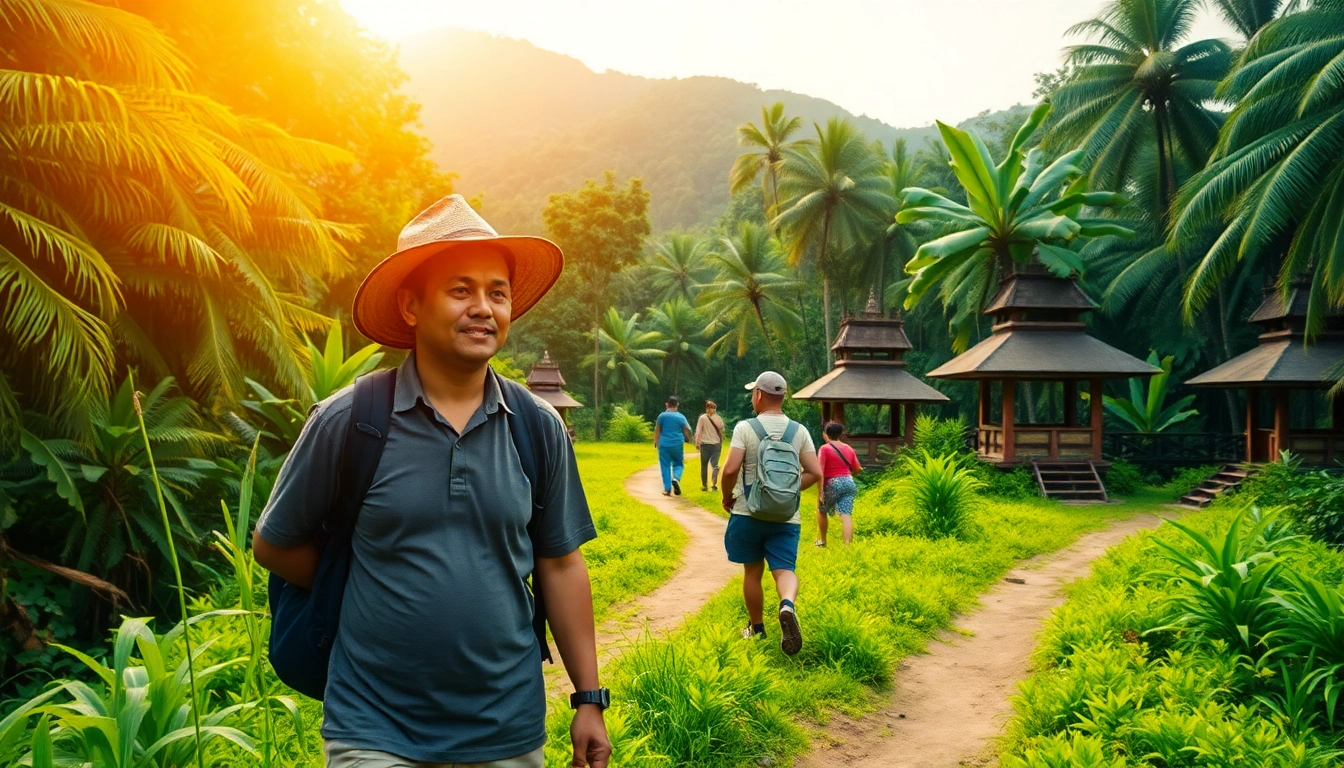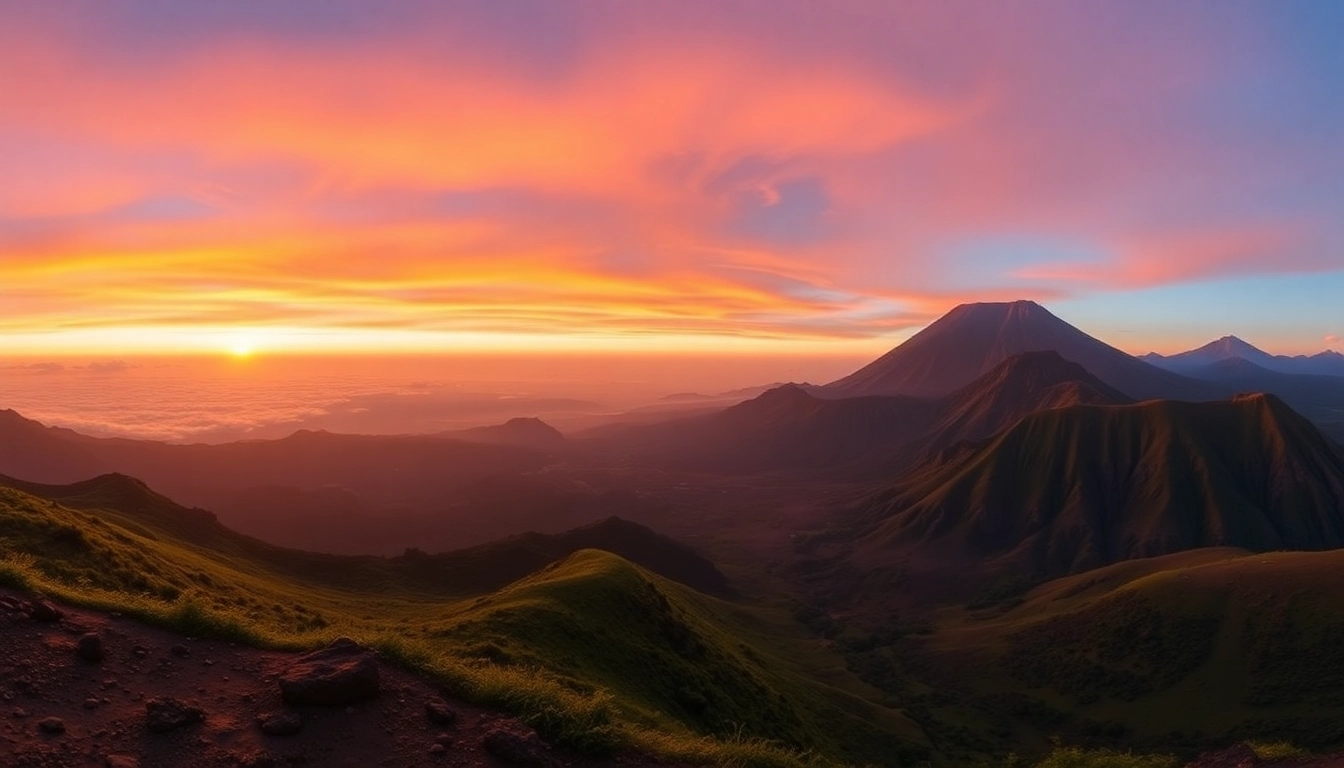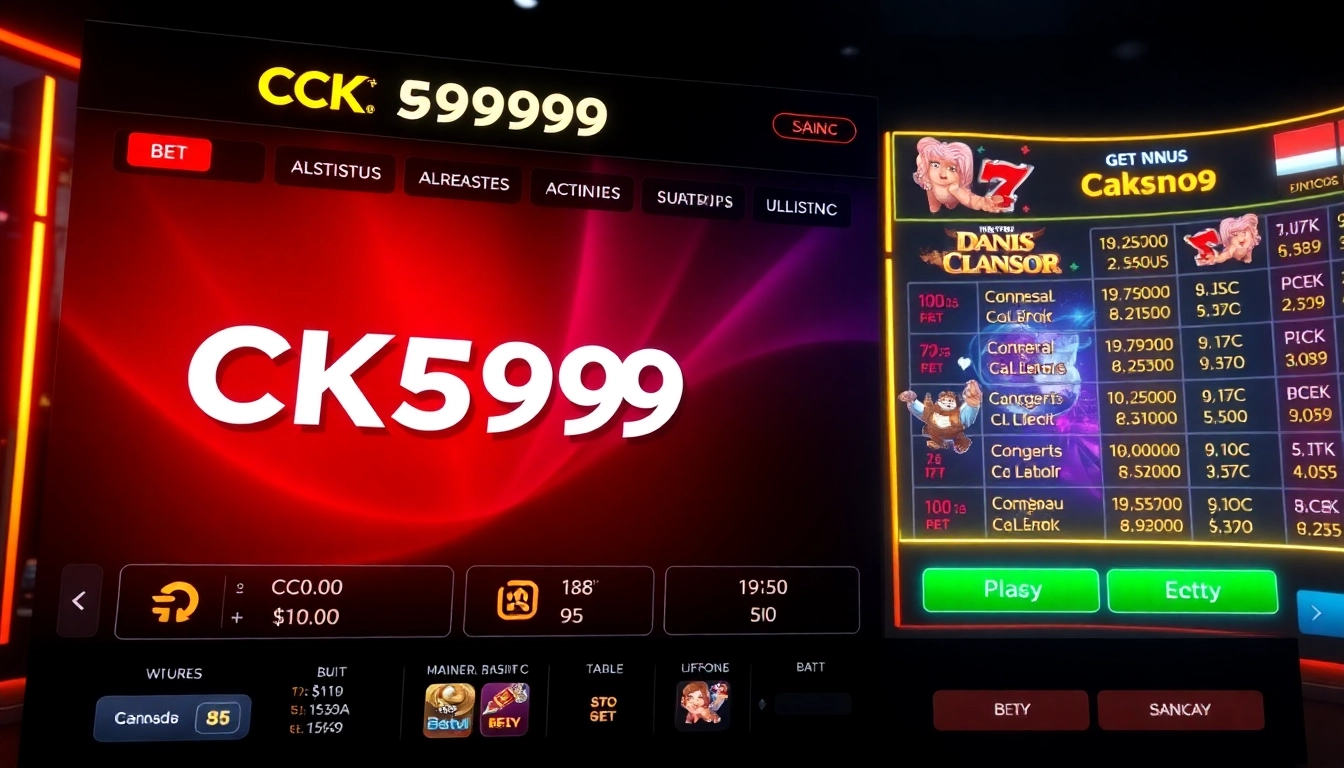Embarking on a journey to Lombok offers travelers a unique blend of natural beauty, rich culture, and adventure opportunities. Whether you’re a first-time visitor or a seasoned explorer, navigating Lombok’s diverse attractions can be both exciting and overwhelming without proper guidance. This comprehensive guide aims to equip you with all the essential insights to make your trip memorable, seamless, and deeply enriching. From understanding the island’s geography and cultural nuances to practical travel tips and top experiences, this article serves as your definitive companion for exploring Lombok in depth.
1. Understanding Lombok: Geography, Culture, and Highlights
1.1 Key Locations and Natural Wonders
Lombok, situated east of Bali, is renowned for its stunning landscapes, including pristine beaches, towering mountains, and lush forests. The island’s geographical diversity is one of its most compelling features. The main regions include the West Coast, home to the vibrant tourist hub of Senggigi, and the southern Kuta area, famous for its surf beaches and vibrant nightlife. The eastern part boasts traditional villages and cultural sites, while the northern regions are characterized by cooler temperatures and scenic rice terraces.
Notable natural wonders such as Mount Rinjani—the second-highest volcano in Indonesia—offer trekking adventures and awe-inspiring panoramic views. The Gili Islands—Gili Trawangan, Gili Air, and Gili Meno—are tropical paradises known for their crystal-clear waters, vibrant marine life, and laid-back atmosphere, perfect for snorkeling and diving enthusiasts.
1.2 Local Customs and Cultural Insights
Lombok’s culture is deeply rooted in traditional Sasak customs, which are distinct from Bali’s Hindu heritage. The Sasak community predominantly practices Islam and maintains unique rituals, music, dance, and craftsmanship. Visiting local villages provides a glimpse into daily life, traditional weaving, and pottery-making. Respect for cultural norms is vital; modest dress when visiting religious sites and customary etiquette in villages enhances respectful interaction.
Festivals such as Lebaran (Eid al-Fitr) are celebrated with lively communal events, offering travelers authentic cultural experiences. Learning a few basic phrases in Indonesian and Sasak can significantly enhance interaction with locals, fostering goodwill and enriching your travel experience.
1.3 Best Times to Visit Lombok
The ideal time for visiting Lombok is during the dry season, from May to September, when weather conditions favor outdoor activities like trekking, beach lounging, and diving. The rainy season (October to April) sees higher humidity and frequent showers but also offers lush landscapes, fewer tourists, and better rates on accommodations. Carefully planning your visit based on interests and climate preferences ensures a comfortable and enjoyable stay.
2. Planning Your Trip: Logistics and Practical Tips
2.1 Accommodation Options and How to Choose
Lombok offers a variety of accommodation options, from luxury resorts and boutique hotels to budget hostels and homestays. Selection depends on your preferred experience and budget. For luxury travelers, selections near Senggigi and Gili Islands often provide premium amenities and beachfront access. Budget travelers can explore guesthouses and hostels in Mataram or local homestays in traditional villages, providing authentic immersion.
When choosing your accommodation, consider proximity to activities, access to transportation, and reviews regarding safety and cleanliness. Booking in advance, especially during peak season, guarantees availability and better rates.
2.2 Transportation Modes and Getting Around
Getting around Lombok involves several options. The most common is renting a scooter or motorcycle, offering flexibility to explore remote areas at your own pace. Always wear a helmet and drive carefully, especially on mountainous roads. Car rentals are available for families or groups seeking comfort and convenience, with drivers often available to navigate challenging routes.
Public transportation, such as angkots (shared minivans), serve key routes but may be limited in coverage. Taxis and ride-hailing apps like Grab are becoming increasingly accessible; however, negotiating fixed fares beforehand is recommended. For island-hopping, boat transfers to Gili Islands or other nearby destinations are reliable and frequent.
2.3 Budgeting and Currency Exchange Tips
Lombok’s currency is the Indonesian Rupiah (IDR). Carry cash for most transactions, as many establishments do not accept cards, especially in remote villages. Currency exchange is readily available at airports, banks, and authorized money changers, often offering favorable rates. ATMs are plentiful in main towns like Mataram and Senggigi.
To optimize your budget, plan for a mix of paid activities, local dining, and accommodations that suit your financial plan. Be wary of fluctuating exchange rates and hidden fees; using a travel card with no foreign transaction fees can be advantageous.
3. Must-Do Activities and Experiences in Lombok
3.1 Trekking Mount Rinjani: A Complete Guide
Mount Rinjani’s trek is among the most iconic adventures in Indonesia. It attracts experienced trekkers and adventure seekers aiming to witness sunrise views from the crater rim, explore the Segara Anak Lake, and experience the island’s volcanic power. The trek typically takes 2-4 days, depending on the route and acclimatization needs.
Preparation is key: packing appropriate gear, acclimatizing beforehand, and proper guidance enhance safety and enjoyment. Reliable tour operators offer guided treks that include permits, porters, and safety equipment. The best seasons are during the dry months; avoid the rainy season to mitigate hazards.
3.2 Beach Hopping: Senggigi, Kuta, and Gili Islands
Lombok’s beaches cater to all preferences—from tranquil, uncrowded shores for relaxation to surf spots like Tanjung Aan and Selong Belanak for surfing. Senggigi Beach serves as a hub of activity with restaurants, nightlife, and water sports. Kuta Beach is renowned for its surf breaks and vibrant sunset views.
The Gili Islands are a must-visit for their vibrant marine ecosystems. Gili Trawangan is popular for nightlife and diving, Gili Air offers a relaxed vibe, and Gili Meno is quieter and ideal for honeymooners or isolation seekers. Snorkeling off the coast reveals colorful coral reefs, sea turtles, and tropical fish.
3.3 Cultural Tours and Local Markets
Discover Lombok’s rich cultural tapestry through visits to traditional Sasak villages such as Sade and Sukarara, where you can observe weaving, dance performances, and local crafts. Participating in cultural workshops deepens your understanding of indigenous customs.
Local markets, like Mataram’s Pasar Cakranegara, offer a vibrant array of produce, textiles, and souvenirs. Engaging with vendors supports local livelihoods and provides an authentic shopping experience. Sampling local delicacies like ayam taliwang and fresh seafood enhances culinary appreciation.
4. Essential Travel Tips for an Enjoyable Lombok Visit
4.1 Safety and Health Precautions
Prioritize health by staying updated on vaccinations and carrying basic medicines for common ailments. Use bottled water, and practice good hygiene. Beware of strong ocean currents and heed local advice for water safety, especially when snorkeling or swimming.
Road safety is critical: drive defensively, be cautious on mountain roads, and avoid night driving in unfamiliar areas. Wearing sunscreen, hats, and sunglasses protects you from the tropical sun.
4.2 Respecting Local Customs and Environment
Engage respectfully with local customs and dress modestly when visiting religious or traditional sites. Avoid littering and refrain from damaging coral reefs or flora during outdoor activities. Participating in eco-friendly practices and supporting sustainable tourism initiatives helps preserve Lombok’s natural beauty for future generations.
4.3 Packing Checklist for All Seasons
- Lightweight breathable clothing for daytime
- Warm layers for mountain treks and cooler evenings
- Sun protection: sunscreen, hat, sunglasses
- Swimwear and snorkeling gear
- Insect repellent and basic first aid kit
- Power bank, universal travel adapter
- Reusable water bottle and eco-friendly accessories
5. Making the Most of Your Journey: Recommendations and Resources
5.1 Top Tour and Guide Services in Lombok
Local tour operators and experienced guides significantly enhance your experience, providing safety, local knowledge, and tailored activities. Reputable companies offer trekking packages, cultural tours, and island hopping experiences. Prioritize those with good reviews, transparent pricing, and eco-conscious practices.
5.2 Recommended Local Cuisine and Dining Spots
Indulge in Lombok’s unique flavors through local dishes such as ayam taliwang, a spicy grilled chicken, and Babi Guling (suckling pig). Coastal warungs and street vendors serve fresh seafood, while upscale restaurants offer fusion options. Popular spots include Warung Buana in Senggigi and Casa Vintage in Gili Trawangan.
5.3 Useful Apps and Contact Information for Travelers
- Google Maps and local transport apps for navigation
- WhatsApp or local messaging services for communication
- Currency exchange and ATM locator apps
- Tour booking platforms like GetYourGuide for curated experiences
- Emergency contacts: local hospitals, police, and embassies




